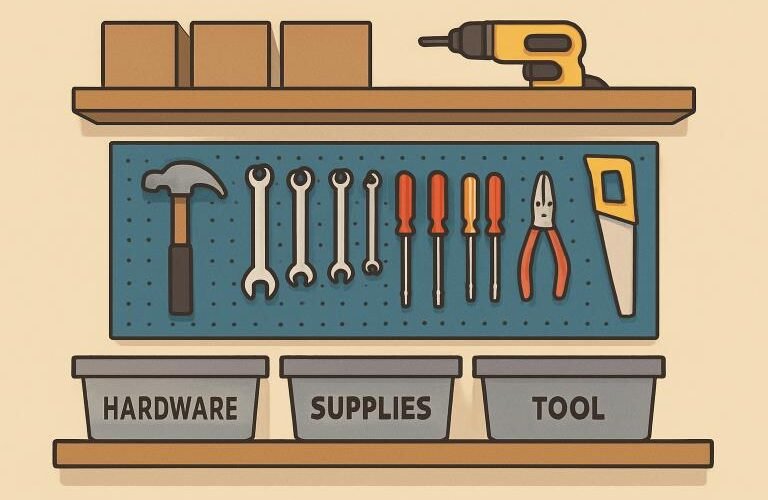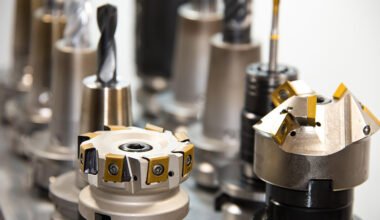Key Ideas to Remember
- Make use of vertical space and keep items off the shop floor to increase storage capacity.
- Using pegboard organizational systems keeps tools readily available and let you create custom storage solutions.
- Clear labeling systems, decluttering and maintenance are three key elements to creating a sustainable organization.
- Organization zones and mobile storage all contribute greatly to productivity, by keeping items out of the way and supporting safety.
Getting and keeping your workshop organized is important for productivity whether it is for do it yourself (DIY) or professional craft work. Organization saves you time by limiting wasted time and keeps ongoing projects in an active state. Using industry body shop supplies keeps you organized so you can spend more time being creative. Well designed shelving and storage solutions all help you stay organized with custom systems altering the amount of space used. It is good habit to put you tools and supplies back into their appropriate place to keep your space organized.
Maximize Vertical Storage Space
Walls are valuable in busy or small workshops, since they conserve floor space and create visibility of tools and materials. Shelves, pegboards, hooks, stackable bins and open bins or baskets mounted at arm’s reach will store most items efficiently. In a professional-level workshop, vertical storage is a primary rule of thumb; it allows flooring to be doubled or even tripled in efficiency.
Implement a Pegboard System
Pegboards are adaptable, expandable, and extremely useful for organizing any combination of hand tools. By fitting one (or more) walls with a sturdy pegboard, you can hang hammers, screwdrivers, pliers, and specialty tools right where you want them. Moving hooks is effectually only a matter of minutes so you can set up your pegboards for every new project or tool purchase. Shadows or labeled silhouettes on the pegboard offer extra measure of direction for you and the rest of the workshop to put things back in their place.
Label Everything Clearly
Clarity is the key to lasting organization. Adding a label maker or printed sticky labels to each box, drawer, shelf, and bin reaps tremendous rewards. When tools and hardware are labelled, anyone can easily find what they are looking for or return something when the work is complete. Labelling is especially important for materials that look similar but serve different functions—it reduces costly mistakes and saves time on future projects.
Regularly Declutter and Maintain Your Workspace
No organizational strategy will work if you don’t keep up with it regularly. Start the daily habit of cleaning your workbench and putting away tools daily. Doing an inventory check or a light sort-out regularly (weekly), helps to keep clutter from accumulating again and brings to the forefront dull, broken or missing tools you need to deal with. Continuing your routine by maintaining your organization will keep your workspace tidy and prolong the working life of your tools and supplies.
Utilize Mobile Storage Units
Flexibility is an important aspect that any growing workshop benefits from. Nothing has more mobility for storage than rolling tool carts, portable drawer units, or stackable transport bins. The ability to bring and store everything needed for the work effort right to the workspace is valuable, especially with large garages, multi-use workbenches and or shared studio spaces. Being able to rotate things in or out, easily move items over, and keeping everything organized in busy contexts is important. Wheeled tools cabinets may also add to good workflow, as stored items can be put on casters rather than using valuable floor space for frequently used items.
Establish Work Zones
Creating dedicated spaces for cutting, assembling, sanding, or finishing in your workshop enhances your workflow and safety. Each area or “zone”, should include the appropriate tools, associated supplies, and personal protective equipment. You may want to consider labeling or color=coding each zone to help identify them. If you share your work space—such as in a community workshop or your garage with your family—designating a specific “zone or station” helps everyone know exactly how to use the tools or where to find the supplies, and minimimizes the chance of accidents, or losing or confusing someone’s tools or supplies.
Maintain a Clean and Safe Environment
Good organization is synonymous with safety. Keeping walkways unobstructed, sweeping up debris regularly and cleaning up spills promptly protects everyone who steps foot in your shop. Put garbage and recycling bins in visible and accessible places. Ensure that emergency exits, first aid kits and personal protective equipment (ie. goggles and gloves) are always accessible in your shop. Each of these activities will contribute to building a culture of care and caution that reduces hazards in your work environment and creates an area that you will want to use every day.
Invest in Multi-Functional Tools
Tools that are constantly in multiple functions are a great investment for any workshop, as they allow businesses to reduce duplication of effort and save space in their limited facilities. Combination tools such as drill/miters are fantastic to eliminate excess tools and get yourself quickly into your next project. Given you have very good organization and maintenance process that supports safe and efficient work practices, you are then actively preparing to work (either on large projects or spatially optimally). It can turn your workshop into a creative space that can further assist you in fulfilling your goals in all areas of your projects.






